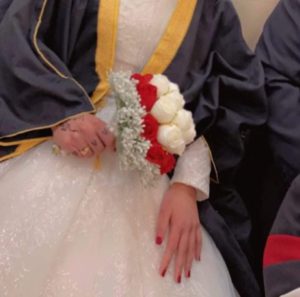Abayat Al_ Khal
Abayat Al _Aam / Abayat Al_ Khal
Abaya is a simple, loose over-garment worn by men. It is similar to a large coat and it covers the body from the shoulders to the feet, with an opening in the front.
One of the traditions related to Jordanian wedding is that the groom’s family will gather at the home of the eldest uncle from the mother’s side of the bride to offer him the Abaya. In this ritual, the Abaya is used to symbolize the sum of money that will be given to the uncle who in turn gives it (the abaya) to the bride as wedding present. The uncle (mother’s brother of the bride) can refuse or accept the amount or the value of the present. After agreement is made i.e., the abaya was accepted, the uncle and the bride’s family will congratulate the groom’s family for the upcoming marriage of the groom. There is also the Abaya of Al ‘Am (the garment of the father’s brother of the bride). He will be given a sum of money as wedding present for his niece similar as to what the brother of the mother was given.
Abayat Al’Am and ‘Abayat Al Khal is an old tradition which is used to appreciate the rank of both uncles of the bride from her two parents’ sides. Presently, the abaya’s may be given symbolically while the money may not be necessarily given. Instead, they only offer their blessings to the newly engaged couple.
The ‘Abayat, (plural of Abaya) are of different types and can be made from different textiles. The best Abayat are made from camel hair. Others are made from premium Cashmere wool. They come in different colors like black or light brown. Some are embroidered with golden threads on the front panels.
This type of abaya is not only a garment worn by men, but it is also a symbol of dignity, generosity and integrity.


